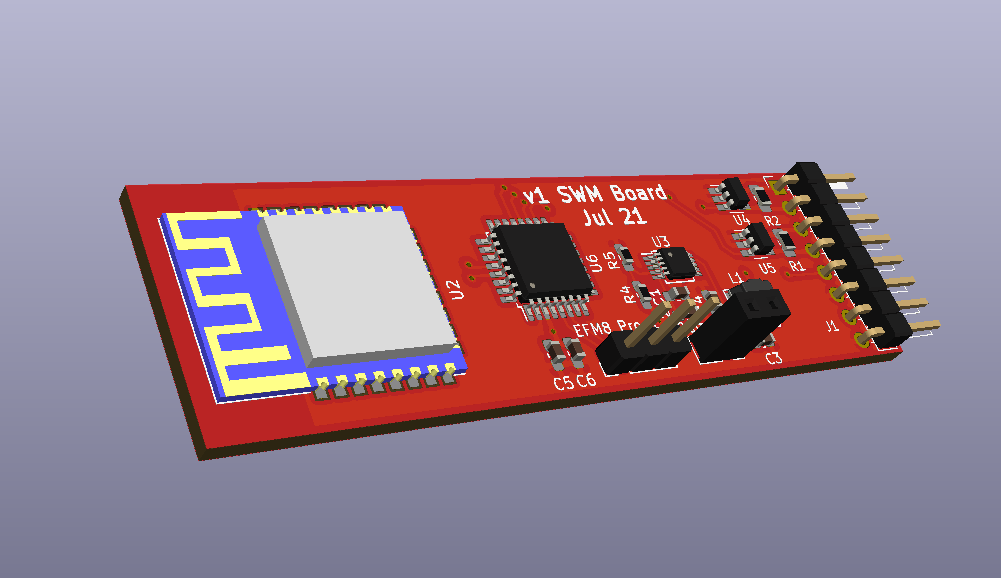-
Layout Complete
07/27/2021 at 15:09 • 0 commentsThe layout is complete! The code uses the EFM8 Laser Bee - I chose the QFN version because it is easier to solder and this board doesn't need to be ultra compact. Going to send it off to be manufactured!
-
Laser Bee
07/26/2021 at 15:18 • 0 commentsCurrently I can't get my hands on a Laser Bee, so instead I'm using a Universal Bee as a temporary prototype before I shift over to the laser bee, given that the SDK and registers are mainly the same. I don't intend for this device to be updated much in the field when it has a Laser Bee on it.
Of course, if it is the Arduino version, that's a whole other story. -
JDY-08 Breakout & Voltage Measurements
07/24/2021 at 09:50 • 0 commentsSo it turns out that you can even find the JDY-08 breakout from Aliexpress, which means that every part of this project is now easily breadboard-able! This means that even if you don't know how to solder, you can also build a measurement circuit yourself.
Since this is meant for low voltage experimentation, it can only measure up to 3.3V. Using Arduino's native ADC which gives us 1024 counts (8-bits), if we increase the voltage range we can measure, the precision falls.
Maybe one way is to create a switch so that you can turn on high voltage measurement whenever you want to, although I think that might already be a feature creep. -
Alternative ICs
07/23/2021 at 00:42 • 0 commentsThe ATMEGA328P is not the best IC to do ADC measurements with, plus it is very out of stock.
I'm thinking for the final design using a Laser Bee from Silicon Labs might do the trick. It is designed specially for measuring analog signals and it is quite a low cost part. It also has USART to pass messages to the BLE module, and it wouldn't need the finagling that the ATMEGA needs to run at 3.3V. -
Current measurement for the JDY-08
07/21/2021 at 16:17 • 0 comments1. My breakout board for the JDY-08 draws about 9.5mA of power @ 3.3V, and this is approximately true even when it is transmitting.
2. I have a pretty bright LED on the board so that can account for roughly 50% of the power draw.
If I use the worst-case estimate: assuming a smallish 600mAh battery (1.2V) with a 60% efficiency, with another 5mA of power draw from the ATMEGA, that is 15mA from the circuit at 3.3V = 50mW vs 432mWh, this means that a fully charged battery can last about 8 hours of continuous power draw and measurement.
Using an Alkaline battery with 2000mAh would give us approximately a day of measurement. I think this is a pretty good even without any power optimization. -
Chip Shortage woes
07/20/2021 at 09:46 • 0 commentsIt is incredible how far this chip shortage has spread. I can't find ATMEGA328P TQFP packages at any of the people I like to buy from.
I guess now I'll have to use the DIP version, although that's not too bad, since that means that the whole circuit can be prototyped on a breadoard.
Simple, Compact Wireless Measurement
Measure, probe, and monitor voltage and current remotely!
 Ben Lim
Ben Lim